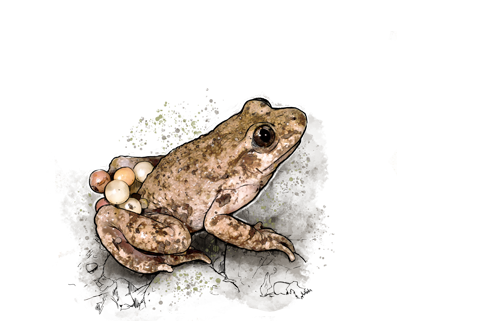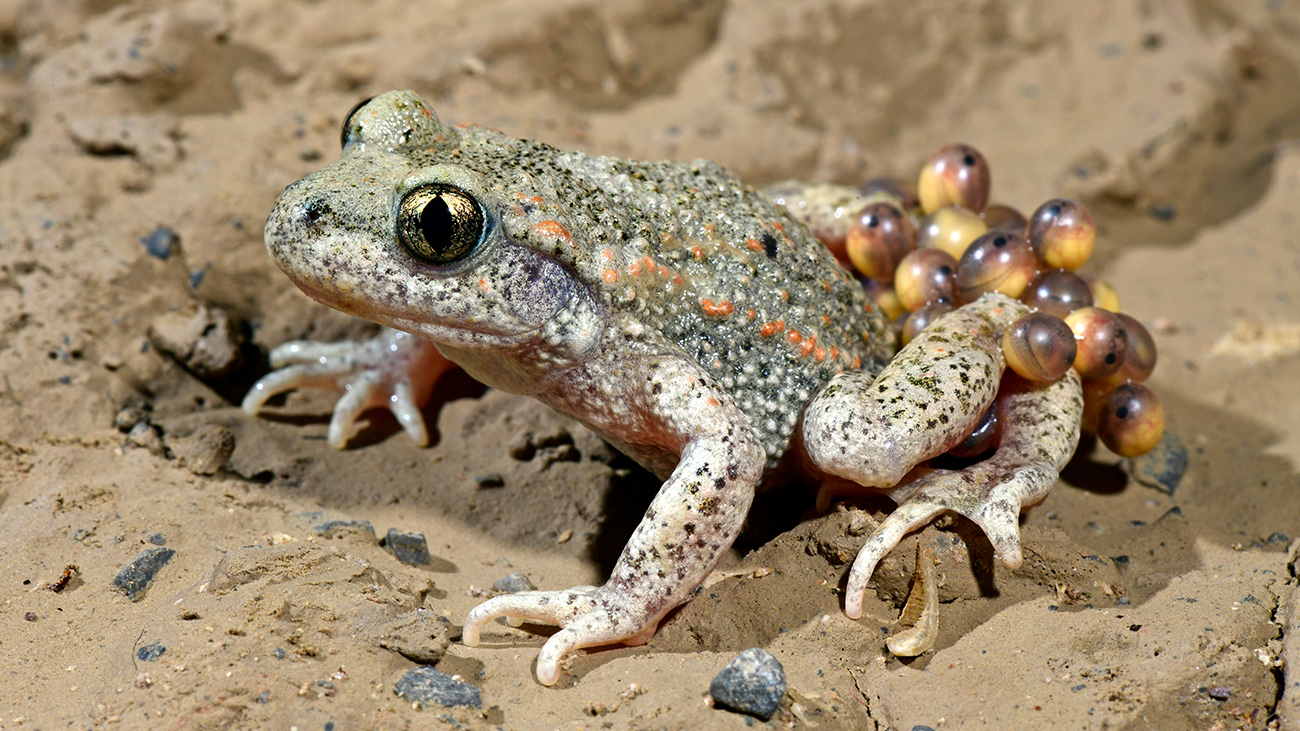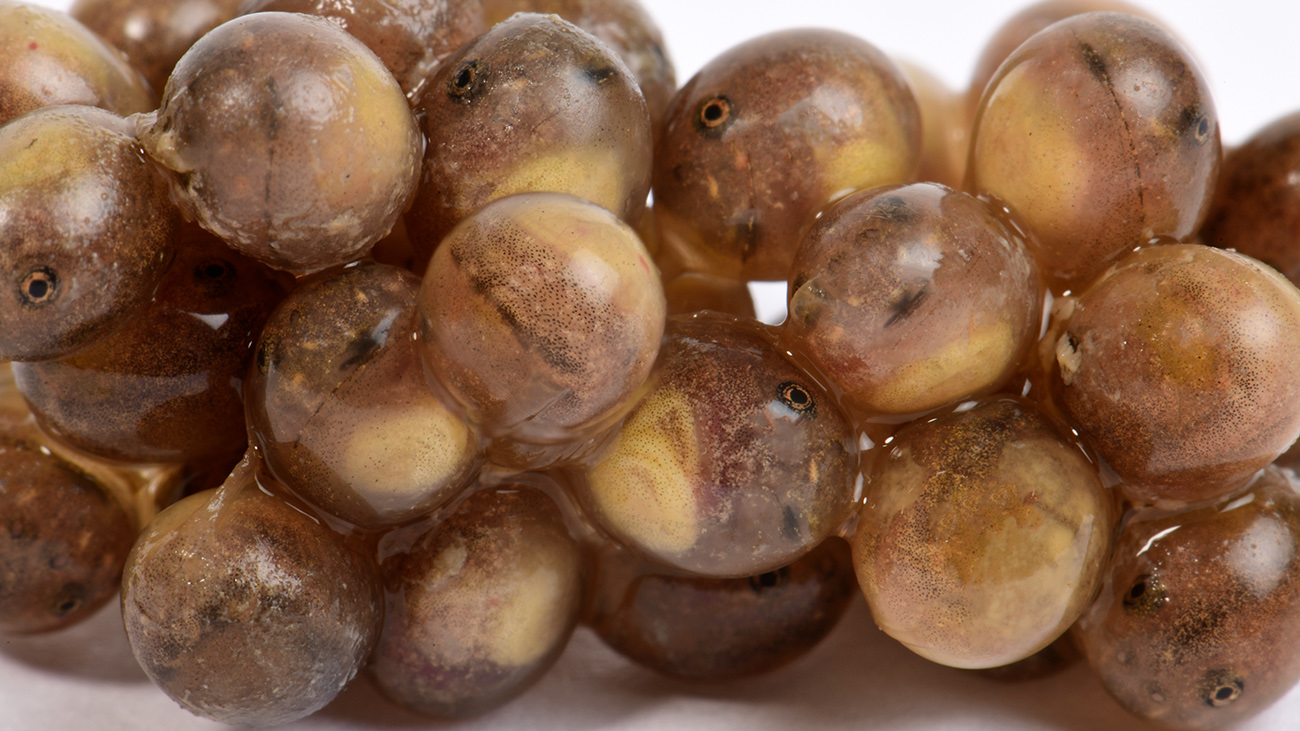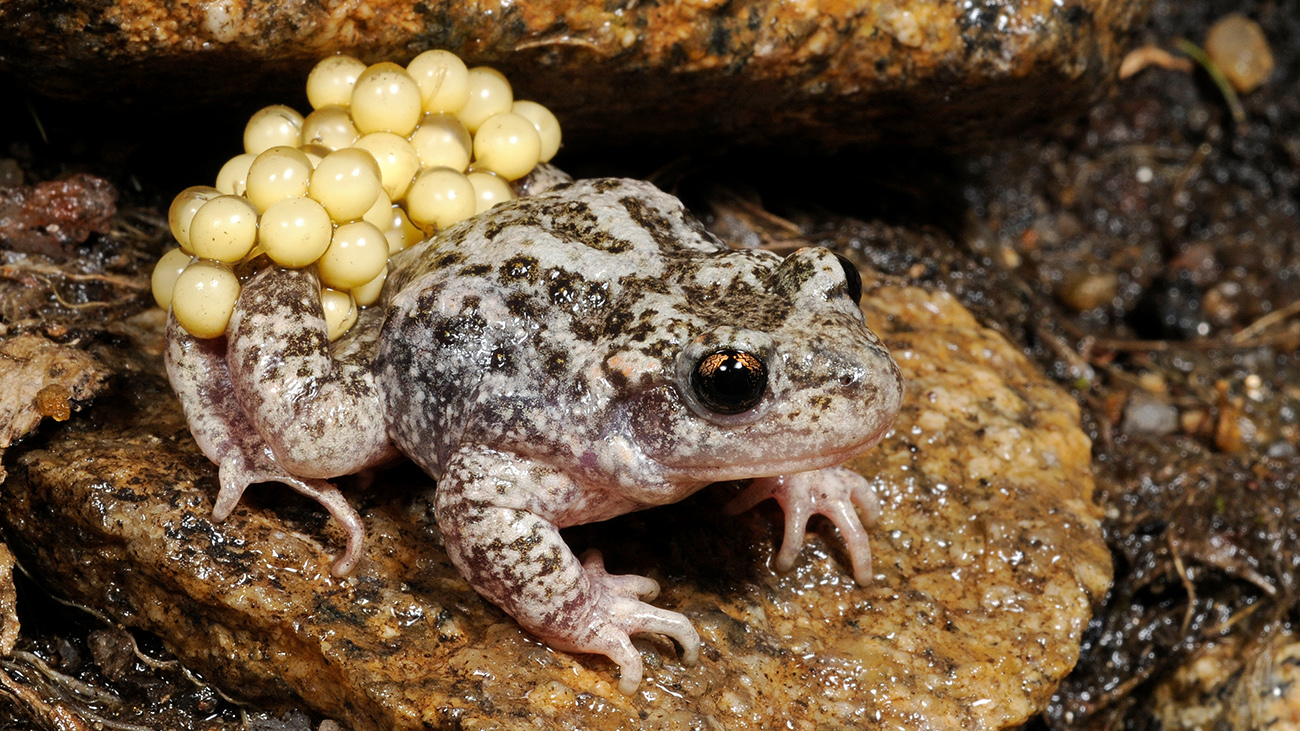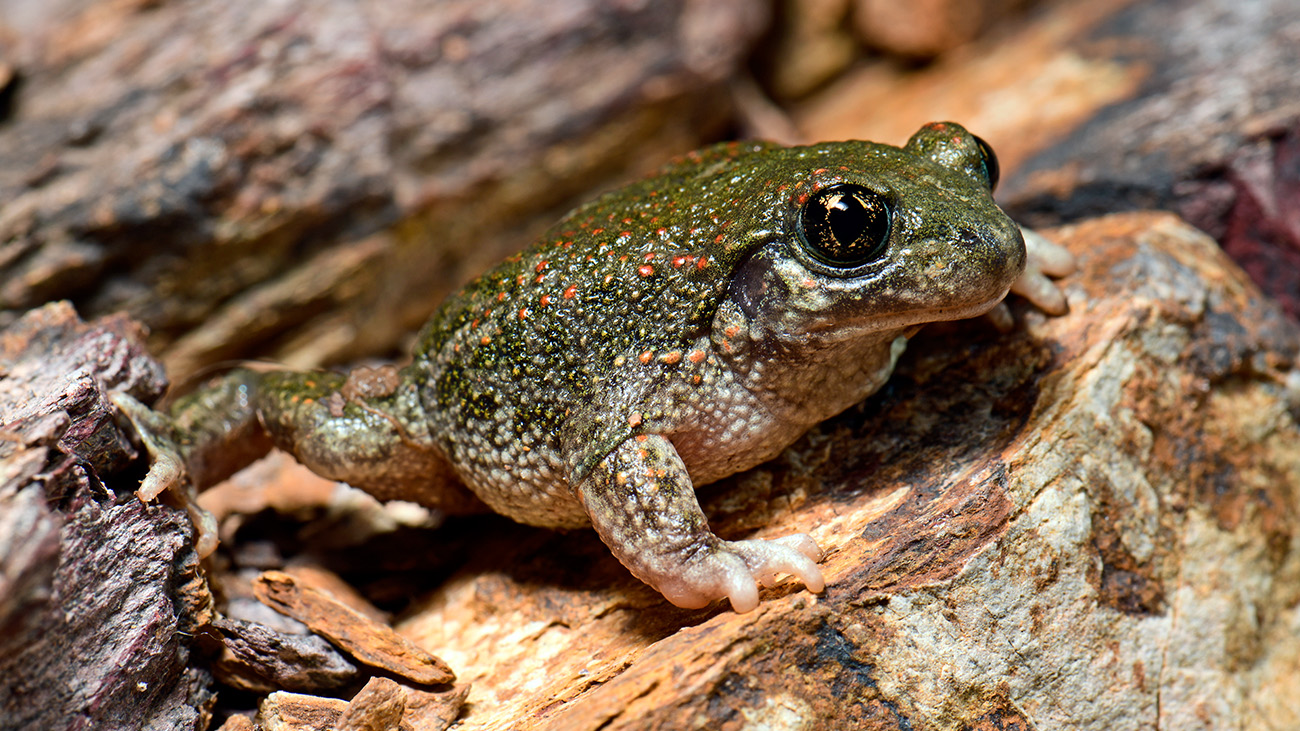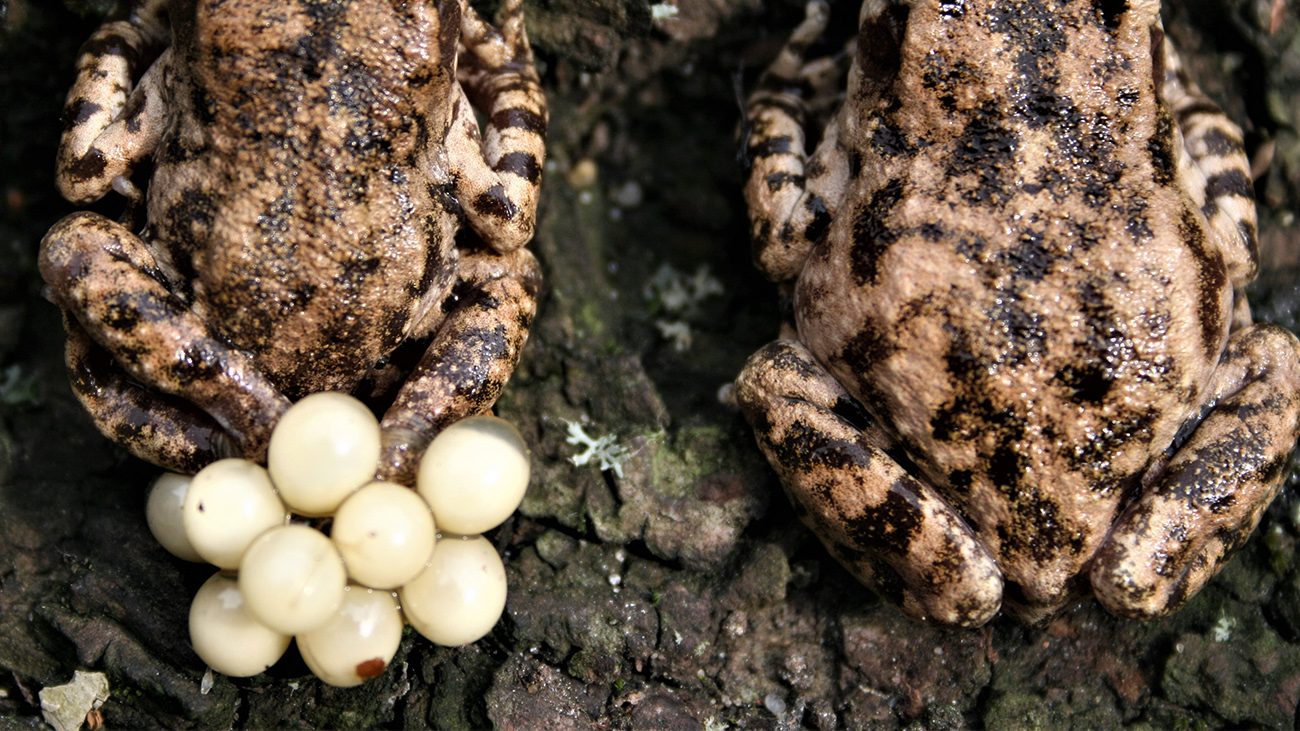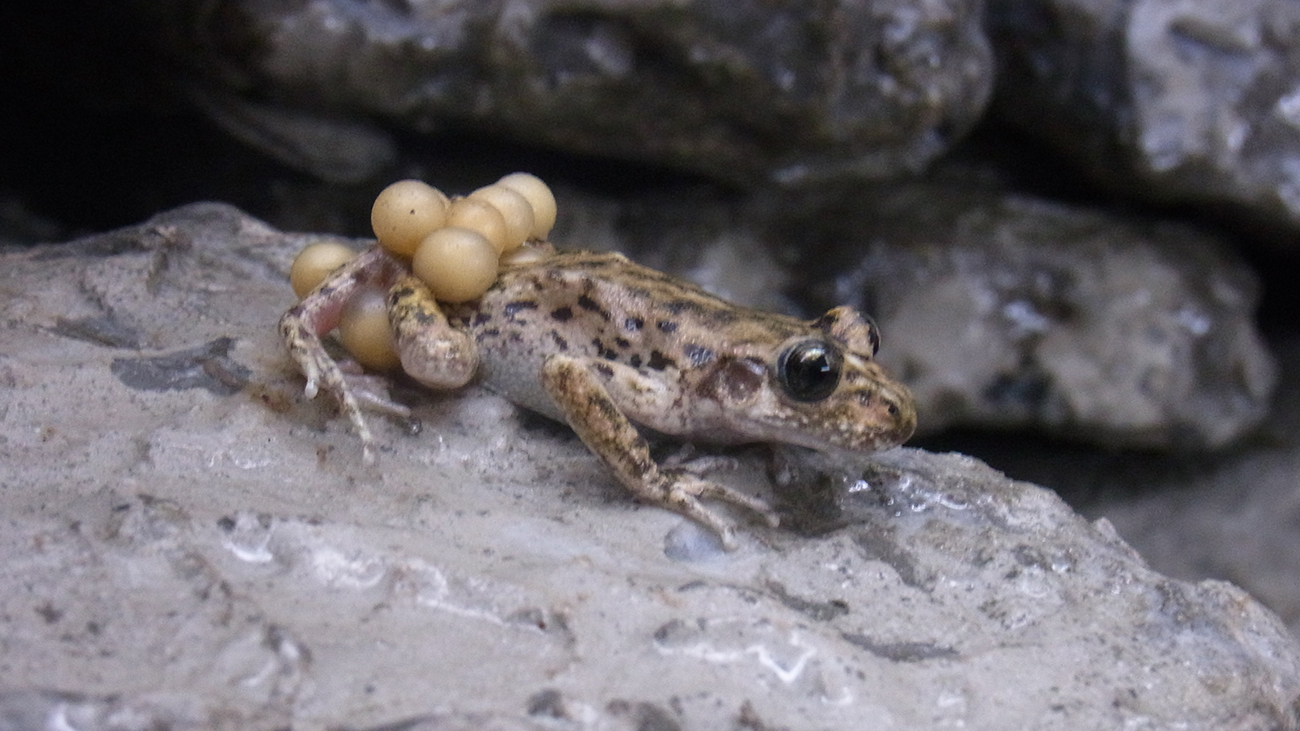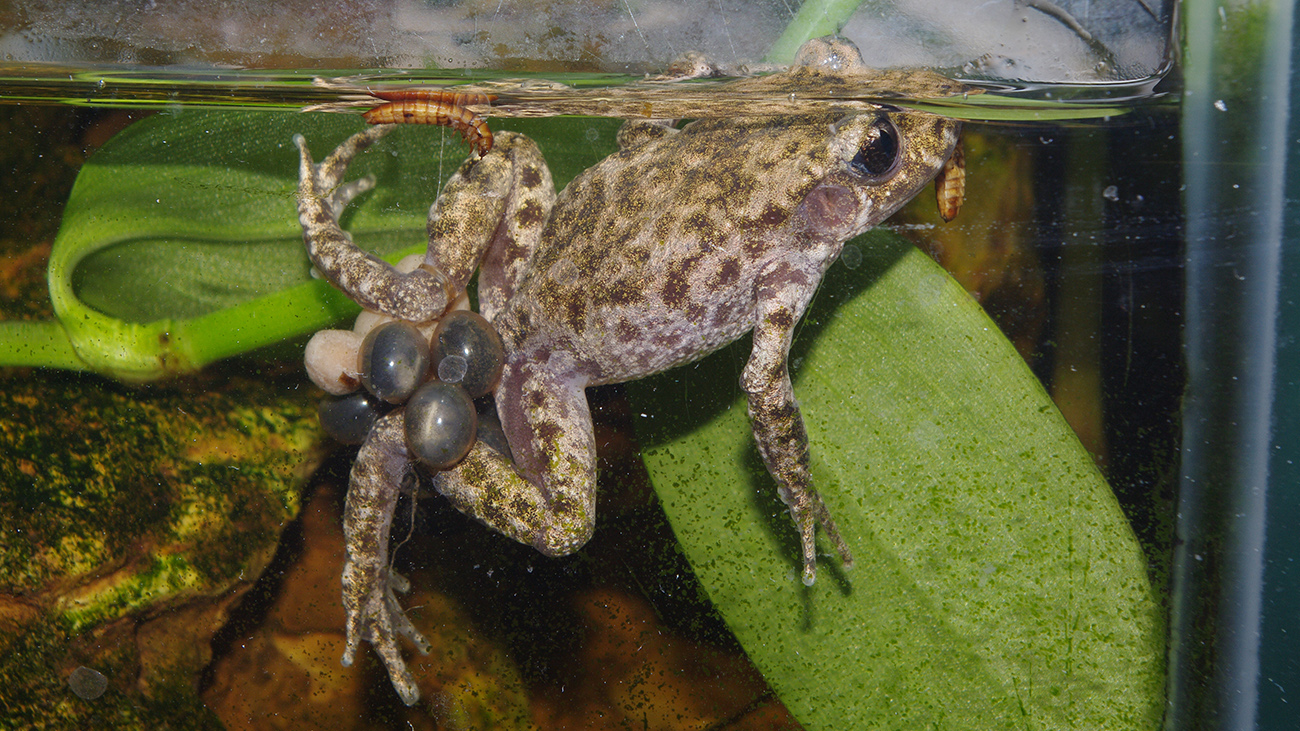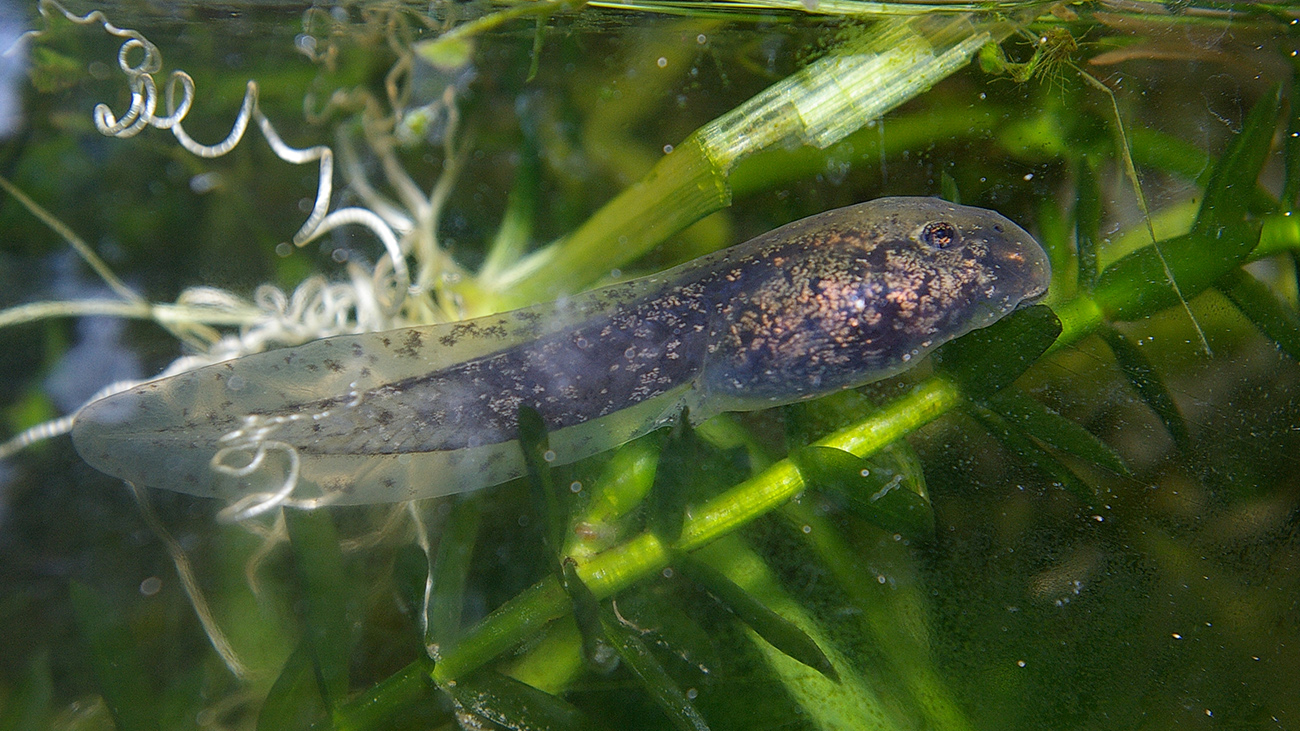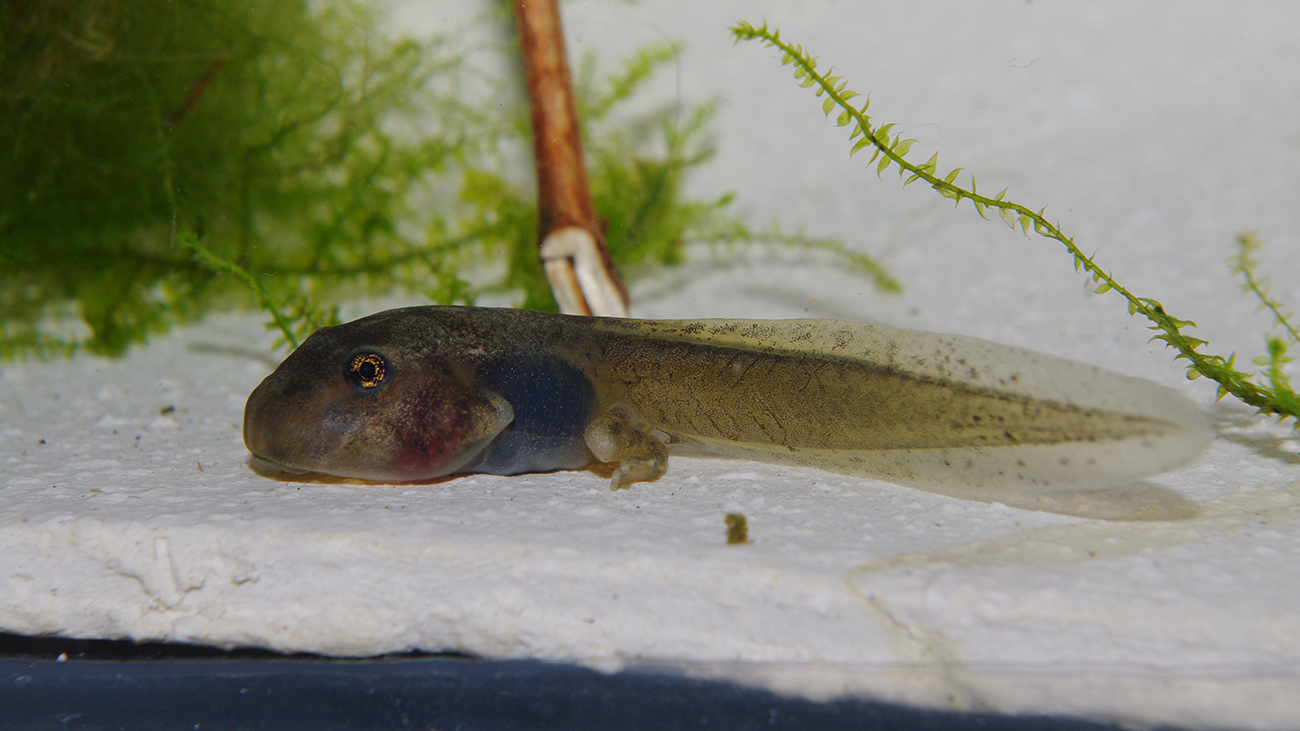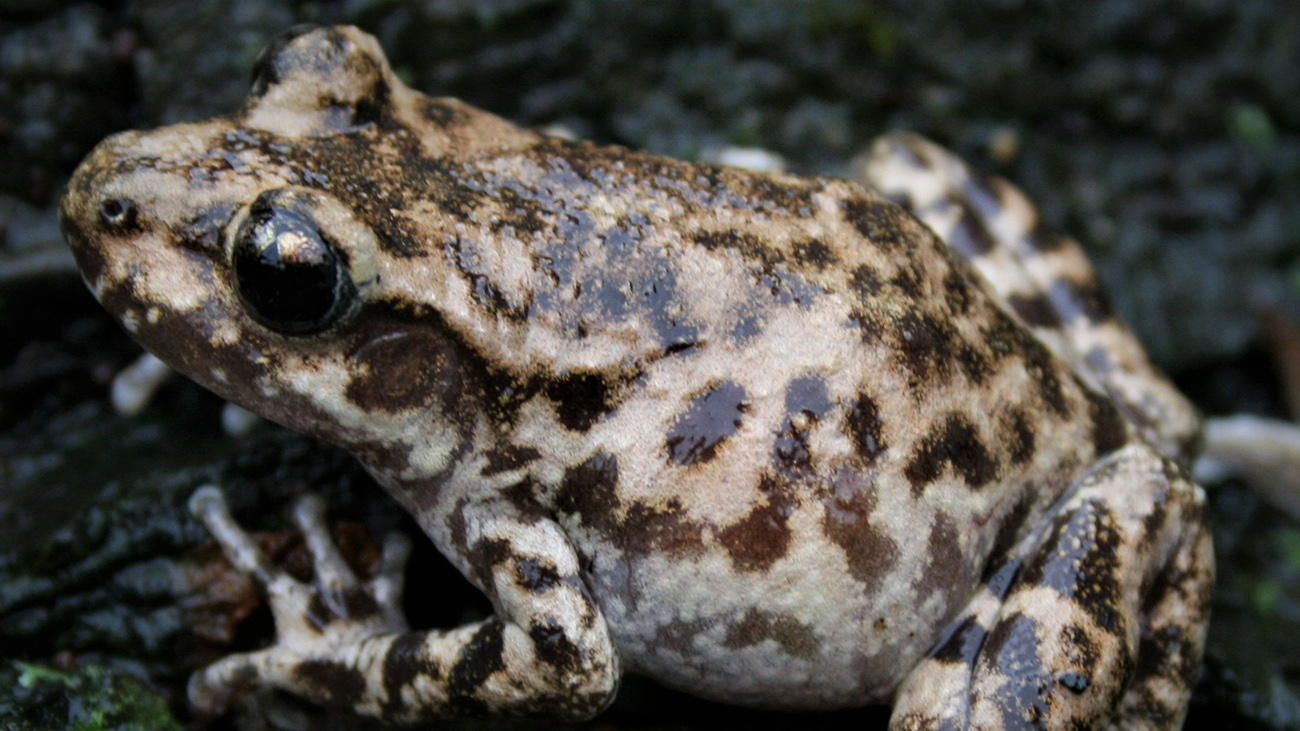Mallorca-Geburtshelferkröte
Alytes muletensis
Mallorca-Geburtshelferkröte
Alytes muletensis
Zielvorgabe CC
53 Haltende
Stand 11/2024
Zielvorgabe CC
425 Tiere
Stand 11/2024
Zielvorgabe CC
53 Haltende
Stand 11/2024
Zielvorgabe CC
425 Tiere
Stand 11/2024
Am Anfang waren ein paar Knochen. Ende 1974 stießen zwei Wissenschaftler im Archäologischen Museum von Deyá auf Mallorca auf rund 14.000 Jahre alte Amphibienreste, die in der Muleta-Höhle auf der Baleareninsel in einer Karstspalte gefunden worden waren. Schnell war klar, dass sie es mit einer unbekannten pleistozänen Art zu tun hatten. 1979 beschrieben sie sie als „Balearenkröte“ (Baleaphryne) und versahen sie nach der Fund-Höhle mit dem Artnamen muletensis. Man nahm an, dass sie spätestens nach dem Erscheinen des Menschen auf Mallorca in der Antike ausgestorben sein musste.
Eine urtümliche Krötenverwandtschaft
Das Mammut der Krötenwelt
Die Berichte über den Fund aus dem Pleistozän erinnerten den Biologen Joan Mayol daran, dass er 1978 eine Gewöhnliche Geburtshelferkröte auf Mallorca gefunden hatte. Er fischte das Tierchen aus seinem Sammlungsglas und staunte nicht schlecht, dass es bei näherer Betrachtung alles andere als gewöhnlich war: Da hatte er wohl ein lebendes Fossil entdeckt! Auf Mallorca gelang es ihm, in den abgelegenen Schluchten der Serra de Tramuntana lebende Kaulquappen und frisch metamorphosierte Jungkröten zu finden. Eine wissenschaftliche Sensation! Die Kröte war für den Froschforscher das, was für andere die Begegnung mit einem leibhaftigen Mammut wäre.
Versteckt in tiefen Schluchten
Allerdings blieb es auch nach ausgiebiger Suche bei einer Handvoll Fundstellen. Offenbar waren die Krötchen nur knapp dem Aussterben entronnen. Einst waren sie auf Mallorca weit verbreitet. Vermutlich wurden sie von der Vipernatter und dem Iberischen Wasserfrosch, die schon in der Antike mit dem Menschen auf die Insel gekommen waren, schlicht und einfach aufgefressen. Einzig in den Schluchten der Serra de Tramuntana war es den Invasoren zu kalt, sodass die Kröten hier ein letztes Refugium fanden.
Schwer emanzipiert: Männchen als Hebammen und Tagesmütter
Der unsichtbare Feind
Wie lange sie diese letzte Bastion noch halten konnten, war ungewiss. Deshalb wurden 1985 einige Tiere von den Artenschützern des Durrell Wildlife Conservation Trust in den Zoo auf der Kanalinsel Jersey gebracht. Es gelang, die kleinen Kröten zu züchten und zu verteilen, sodass schon 1989 eine Auswilderung auf Mallorca beginnen konnte. Tausende Kaulquappen und junge Kröten wurden unter wissenschaftlicher Leitung ausgesetzt – allerdings nur in Schluchten, in denen die Art verschwunden war. Diese Vorsichtsmaßnahme erwies sich als goldrichtig. Denn in Europa hatte sich zwischenzeitlich ein bis dato unbekannter Feind ausgebreitet: der Chytridpilz Bd. Er kann zu Massensterben bei Fröschen führen. Als er 1999 wissenschaftlich beschrieben wurde, war es schon zu spät: Mit den ausgesetzten Kröten war der Pilz auch nach Mallorca gekommen.
Ein Viertel der in der Natur lebenden Mallorca-Geburtshelferkröten sind Nachkommen der Zoo-Nachzuchten
© Serge Bogaerts
Es bleibt brenzlig
Trotzdem war das Auswilderungsprogramm ein Erfolg: Von 25 Fundorten, an denen die Kröten heute vorkommen, geht fast die Hälfte darauf zurück. Ein Viertel der heute in der Natur lebenden Mallorca-Geburtshelferkröten sind Nachkommen der Zoo-Nachzuchten.
Doch der Pilz bleibt ebenso eine Bedrohung wie die alten Feinde Wasserfrosch und Vipernatter. Und die haben nun einen mächtigen Verbündeten: den Klimawandel. Die steigenden Temperaturen könnten der Seuche zum Ausbruch verhelfen oder den Invasoren ermöglichen, noch weiter in die kühlen Schluchten vorzudringen. Hinzu kommen Probleme mit Landwirtschaft und Umweltverschmutzung.
Eine Entwarnung gibt es also noch lange nicht. Im Gegenteil: Es ist durchaus denkbar, dass die Lebensräume mittelfristig für die Kröten unbewohnbar werden. Das muss nicht ihr endgültiges Aus in der Natur bedeuten, denn eines Tages können die Invasoren und der Pilz vielleicht ausgerottet und die Biotope renaturiert werden. Was allerdings diesen lebenden Fossilien nur dann nutzen würde, wenn sie bis dahin in menschlicher Obhut, in Zoos und bei Privathaltern, überleben.
Artenschützer vom Durrell Wildlife Conservation Trust/Jersey Zoo bei der Arbeit in der Serra de Tramuntana auf Mallorca © Dawn Fleming/Durrell Wildlife Conservation Trust
Für Haltende
Basisinformationen zu Biologie und Haltung
Die Mallorca-Geburtshelferkröte eignet sich sehr gut zur Haltung im Terrarium und kann auch Einsteigern und Schulvivarien bedenkenlos empfohlen werden. Zur Haltung einer Gruppe von bis zu 12 Tieren eignen sich Terrarien der Größe 80 x 30 x 40 cm. Bodengrund aus Kies, Verstecke aus Steinplatten, Tonscherben oder Korkrindenstückchen. Wichtig sind trockene und feuchtere Unterschlupfe. Eine große Wasserschale mit sicherer Ausstiegsmöglichkeit dient zum Baden und Absetzen des Laichs. Die Haltung erfolgt bei Zimmertemperatur. Gefüttert wird mit allen gängigen Futtertieren bis zur Größe von mittelgroßen Heimchen. Die Kaulquappen können problemlos in großen Gruppen in normalen Aquarien aufgezogen werden.
